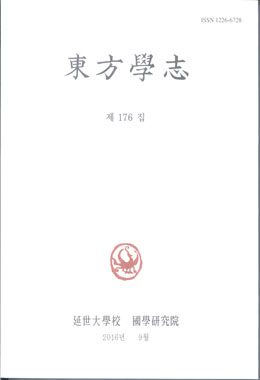학술논문
일제하 中部幾次郞의 林兼商店 경영과 水産財閥 로의 성장
이용수 36
- 영문명
- 발행기관
- 연세대학교 국학연구원
- 저자명
- 코노 노부카즈
- 간행물 정보
- 『동방학지』동방학지 제153집, 277~326쪽, 전체 50쪽
- 주제분류
- 인문학 > 문학
- 파일형태
- 발행일자
- 2011.03.31
8,800원
구매일시로부터 72시간 이내에 다운로드 가능합니다.
이 학술논문 정보는 (주)교보문고와 각 발행기관 사이에 저작물 이용 계약이 체결된 것으로, 교보문고를 통해 제공되고 있습니다.

국문 초록
이 논문은 일본 굴지의 수산재벌로 성장한 中部幾次郞(나카베 이쿠지로)의 林兼商店(하야시카네 쇼텐)이 러일전쟁 이후 조선으로 진출하여 수산재벌에 이르기까지의 성장과정을 살펴본 사례연구이다. 林兼商店은 大阪 인근 明石의 수산물을 대소비지인 大阪 雜喉場市場으로 운반하는 단순 유통업자였다. 그런데 1904년에 러일전쟁이 발발하자 일본군용 식량의 수요가 급속히 증가하면서 사업 영역을 일본 서부해역으로 확장했다. 또 이 때 본거지도 明石에서 下關으로 옮겼는데, 이곳에서 조선에 관한 정보를 얻었다. 이를 계기로 1907년에 조선에 진출하여 당시 남해안에 조업 중이던 일본인 어민들의 어획물을 매집하여 이를 일본 關西市場으로 운반하는 일에 뛰어들면서 자본을 축적하기 시작했다. 林兼商店의 성장과정은 각 시대별로 나누어서 볼 수 있다. 1910년대는 조선총독부가 조선근해의 어업활동과 수산물 유통을 적극적으로 지원하는 가운데 수산물 운반업을 중심으로 성장한 시기였다. 1920년대는 제1차 세계대전 후의 호황으로 인해 어업계에도 많은 자본이 유입된 가운데 林兼은 어업직영화를 시작함으로써 단순 유통업에서 벗어나 직접 생산단계에 뛰어들었다. 곧이어 林兼은 자본력을 동원하여 일본인 어업자본가들을 중심으로 일종의 독점 체제를 구축해가면서 조선의 수산자원을 장악하였다. 1930년대에 들어와서는 林兼은 수산물을 원료로 하는 가공업에도 착수함으로써 더욱 부가가치가 높은 관련 사업으로 사업다각화를 추진했다. 뿐만 아니라 1930년대 후반부터 일제세력권이 동아시아전역에 확대해 가는 과정에서 林兼은 영업지역을 확대하면서 경영규모를 급속히 확대시켜 거대한 자회사들을 거느리는 ``水産財閥``로 성장했다. 즉 林兼商店의 경영확대 과정은 식민지를 기반으로 발전한 일본수산업계의 기원이면서 동시에 일제 식민지시대와 현재 일본의 연속성을 보여주는 하나의 사례라고 할 수 있다. 한편 林兼商店의 사업적인 성장은 조선 수산업의 변천과정과도 일치하였다. 특히 1920년대에는 주로 일본인 유통자본이 조선의 어업현장을 후방통합함으로써 어업의 근대화가 이루어졌다. 그 결과 압도적인 어획량을 가진 일본인 자본가를 중심으로 한 체제가 조선의 어업현장에서 형성되었다. 반대로 그 때까지 어업에서 중심적인 역할을 했던 조선인 어업자들은 주변부로 배제된 것과 동시에 근대적 어업의 예속적 노동자로 전락하는 자가 속출했다. 나아가서 1930년대에는 대규모의 수산업 가공시설을 설치할 수 있는 일본인 대자본가가 더 많은 이익을 얻을 수 있는 체제가 형성되었다. 결국 조선 수산업에서 일본인 경영자와 조선인 노동자의 勞資關係뿐만 아니라 수산업 경영자들 사이에서도 민족적 불평등이 발생하게 되었다. 즉 조선 수산업의 근대화와 변천과정은 민족 간의 갈등과 왜곡을 기반으로 이루어진 것이었다.
영문 초록
The aim of this study is to investigate how Nakabe Ikujiro, a renowned Japanese conglomerate of fisheries, successfully founded his Hayashikane Fishery Company after the Russo-Japanese War by advancing into the Korean peninsula. Nakabe Ikujiro used to be a mere distributer of fisheries in Akashi to the Zakoba market in Osaka, where fisheries were abundant. Then, with the outbreak of the Russo-Japanese War in 1904, the demand for food for Japanese soldiers skyrocketed, leading the business to be expanded to the western coast of Japan. The focus then shifted from Akasi to Shimonoseki, where he obtained information about Joseon. His company collected fisheries from Japanese fishermen in the southern coast and advanced to Joseon in 1907, delivering fish to the Kansai Market in Japan to accumulate capital. The growth phase of the Hayashikane Fishery Company can be chronologically divided. In the 1910s, the Japanese Government General of Joseon actively supported fishing and distribution of fisheries off Joseon, where the economy was mainly driven by transportation of fisheries. Amid much capital injection in the fishery industry in the economic boom after World War I in the 1920s, the Hayashikane Fishery Company started to be in direct charge of the fishery business, aiming to move beyond mere distribution. Immediately afterwards, the Hayashikane Fishery Company dominated the fishery resources in Joseon by establishing a kind of monopoly centered on Japanese fishery capitalists. In the 1930s, the Hayashikane Fishery Company sought to diversify its business to more high-value industries by commencing the fisheries-based processing business. Furthermore, as the Japanese hegemony spread throughout East Asia starting in the late-1930s, the company expanded its sales posts to rapidly scale up its management, thus growing into a conglomerate of fisheries with large-scale subsidiaries. In other words, the management expansion of the Hayashikane Fishery Company did not only originate from the business of Japanese fisheries that prospered through colonies, but is also an example of the continuity of Japan`s colonial period through today`s Japan. Meanwhile, the growth of the Hayashikane Fishery Company was also consistent with the transformation of the fishery industry in Joseon. In the 1920s in particular, Japanese distribution capital integrated fishery spots in Joseon backwardly to modernize the fishery industry. As a result, a scheme centered on Japanese capitalists and a dominant portion of fish stock was formed on fishery spots in Joseon. By contrast, fisheries businessmen in Joseon were not only relegated to the periphery but their roles were increasingly to that of laborers subservient to the modern fishery business. Moreover, in the 1930s, a system was formed in which large-scale Japanese capitalists capable of establishing massive fishery processing facilities could reap more profits. Eventually, nationalistic inequalities started to occur in the master-servant relationship between Japanese entrepreneurs and laborers of Joseon and amongst entrepreneurs in fisheries. In other words, the modernization and transformation of the fishery industry in Joseon was based on cross-national conflicts and distortions.
목차
키워드
해당간행물 수록 논문
- 일제하 中部幾次郞의 林兼商店 경영과 水産財閥 로의 성장
- 실천하는 문인,성찰하는 학인의 자취 -국문학자 이선영의 삶과 학문
- 후쿠오카번(福岡藩)과 통신사(通信使)
- 1763년 필담자료를 통해 본 에도에서의 문사 교류 - 『傾蓋集』 서문에 보이는 인식을 중심으로 -
- 西周왕조의 族의 재배치와 同姓不婚 -東征 이후 西周王朝의 族 통일정책에 대한 검토-
- 『問차餘響』과 『日觀唱酬』 所載 南玉의 酬應詩 比較 硏究
- 임술(壬戌) 1682년 사행(使行)과 후지산시(富士山詩)
- 상고시기 한반도 서남부와 일본 큐슈지역 간 교류 및 문화적 상관관계
- 일제하 조선.만주의 제당업 정책과 설탕유통
- 최한기와 니시 야마네의 역사철학과 근대적 인간 이해
참고문헌
교보eBook 첫 방문을 환영 합니다!

신규가입 혜택 지급이 완료 되었습니다.
바로 사용 가능한 교보e캐시 1,000원 (유효기간 7일)
지금 바로 교보eBook의 다양한 콘텐츠를 이용해 보세요!





